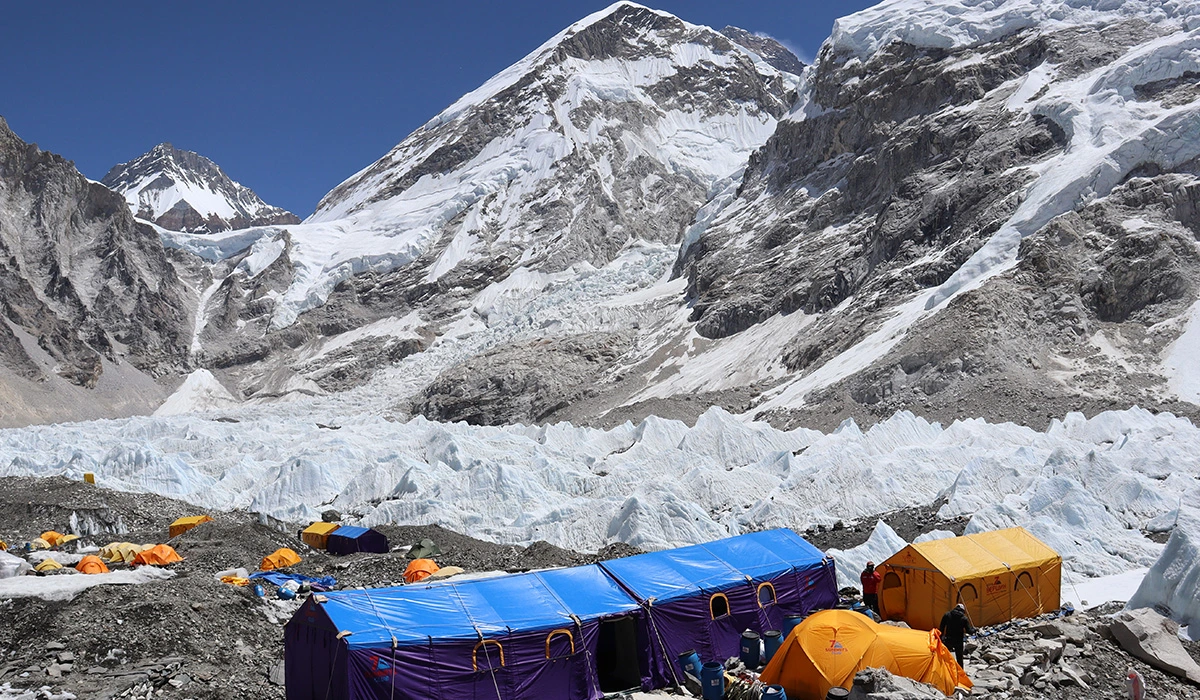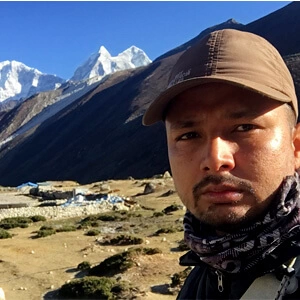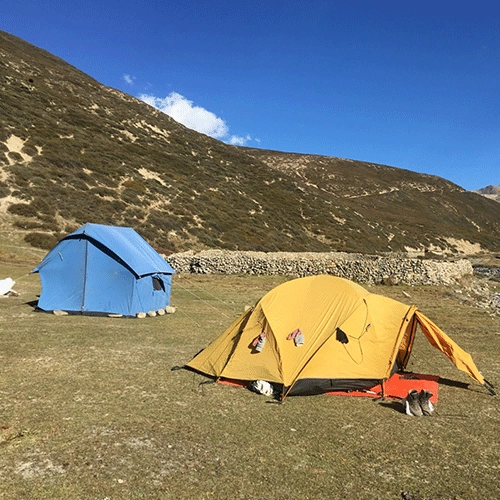Why Everest Base Camp Trek in November?
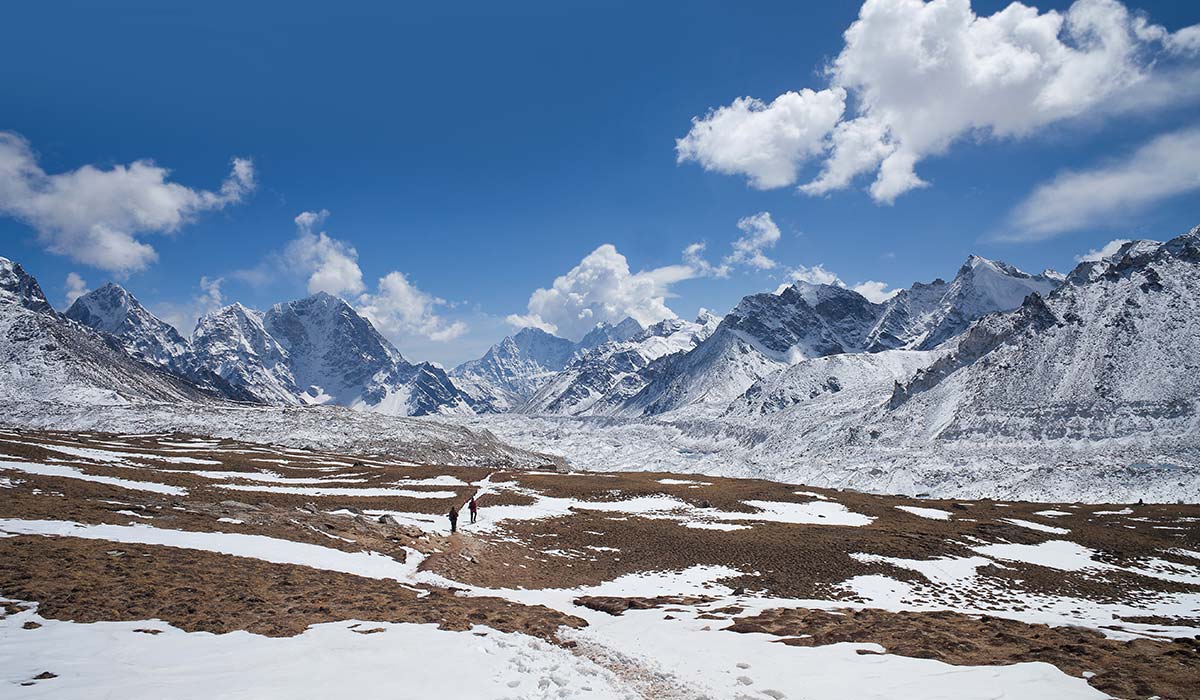
Most Ideal Weather Conditions
The autumn season is generally popular for its stable climatic conditions. Thus, in this core-to-end period of the autumn season, you can expect the ideal setting to accommodate your outdoor exploration. During November, you will be able to relish calm and lovely weather with ideal temperatures. The days are generally sunny and warm during this season, but the temperature isn’t too hot either. Also, the mornings and evenings are fresh and cool which will keep you refreshed, and you will not have to worry about any kind of weather-related obstacles during the trek.
Peak Visibility
As the days of the fall season are generally clear, you will be able to enjoy the most iconic views of the surrounding peaks during November. This mainstream trekking adventure is famous for the most stunning views of iconic peaks, such as Everest, Lhotse, Ama Dablam, Nuptse, Thamserku, Changtse, and many others. So, you will be able to enjoy the wide vistas of these magnificent peaks without any obstructions during this month. On top of that, the sunrise and sunset views in the perfect setting this month will be a phenomenal experience.
Perfect Trail Conditions
During the autumn season, the trails are well-maintained as it is a peak trekking point in the country. As the precipitation rate is low in autumn, the trails are also dry and comfortable to walk on. So, unlike the challenging trail aspects of the off-season, you will be able to traverse the route quite easily and without having to put in any kind of extra effort. The route to the high Himalayan passes is also much more easily accessible if you are looking forward to extending your exploration after your Everest Base Camp Trek in November.
Vibrant Landscape
The landscape of the autumn season has a unique charm to it. The vibrant color of the fall season unveils a unique side of the mountain during this peak trekking season. As this month is also a harvesting month, you will be able to witness the golden-colored farmlands with ripe crops. Similarly, the beautiful shades of grey, red, yellow, and green create the most photogenic setting with the sparkling mountain views on the backdrop.
Unique Wildlife Exploration
The Sagarmatha National Park, which is also a UNESCO Site, is popular for its rich bio-diversity of rare species of flora and fauna. As the weather conditions are most suitable during the autumn period, you have a high chance of encountering those rare species during your November trek. During the season, migratory birds pass through the region to avoid the approaching winter. Similarly, the favorable weather conditions and the wildlife preparing for hibernation are more active; you have a high chance of witnessing high-altitude altitude wildlife such as Himalayan tahr, snow leopard, musk deer, Himalayan pika, and many more.
Cultural Experience
This beautiful segment of the fall season is a festive month in Nepal that celebrates some of the significant festivals in the country. During November, beautiful festivals such as Tihar, Sita Bibaha Panchami, and Mani Rimdu. As these festivals are celebrated throughout the country, you will have a great time exploring the cultural prospects of this beautiful Himalayan nation. So, your Everest Base Camp Trek in November, besides rewarding you with an incredible Himalayan exploration experience, will also provide you the opportunity to soak in the immense cultural experience.
Weather and Climate of Everest Base Camp In November
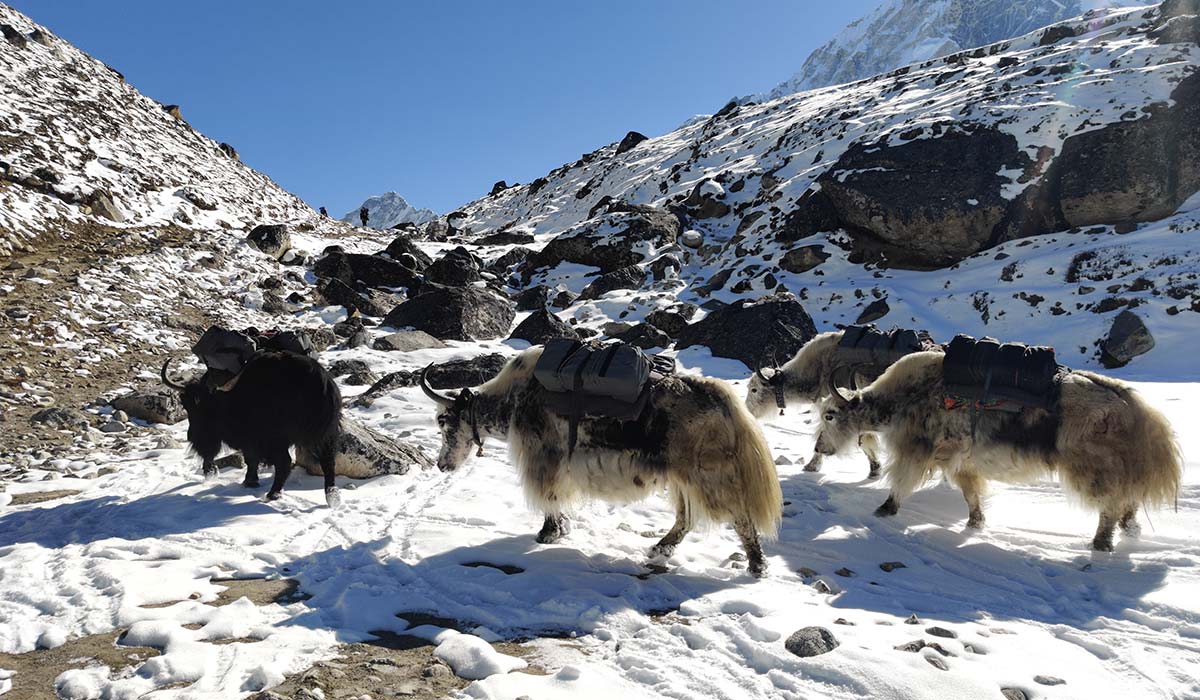
Daytime and Nighttime Temperatures
The fall season has the most pleasant climate and comfortable temperatures throughout different climatic zones. Thus, during your November Everest Base Camp Trek, the pleasant daytime and nighttime temperatures will make the experience comfortable. The temperature at the lower trekking trails of the Everest region is around 14°C to 20°C (maximum), and the nighttime temperature can fall upto 0°C to minus degrees. In the higher region, the daytime temperature is around 9°C to 16°C, and at the nighttime, it can drop to 2°C to -11°C. So, during your trek, you have to account for the fact that the higher regions are generally cold, and the early morning and nighttime temperatures can drop to minus degrees.
Climate of Typical Day and Best Time to Enjoy Views
There is a very low precipitation rate in November, so the days are typically clear and sunny. Although you will be able to enjoy the clear mountain views from anywhere on the trekking trail the best time to catch the magical moments would be during the morning. As the sun rises amidst the peaks and its rays hit the sparkling slopes of the mountain, it creates a surreal and unforgettable setting. That’s why the sunrise view is one of the most popular activities among the trekkers. As for the evenings, if there is bad weather, the views of the mountain can be covered by foggs.
Everest Base Camp Trekking Route and Itinerary
Route Options
Everest region is the most popular trekking destination across the world and a mainstream region in Nepal. Thus, besides the standard Everest Base Camp Trek, there are several options to choose from for your Himalayan exploration. After the base camp exploration, the Gokyo Valley Trek is the second most popular trekking option in this mainstream region. You can include this trekking prospect in your Everest trek plan if you want to do a multi-highlight adventure. Similarly, if you are looking for a bit of challenge and thrill, the Everest High Pass Trek with EBC will be the most suitable fit for you. This journey, besides exploring the mainstream base camp route, will also take you across two of the significant passes in the Himalayas: Cho La Pass (5,365 meters) and Renjo La Pass (5,350 meters), including the Gokyo Lakes (4,700 to 5,000 meters).
In case you are looking for a comfortable journey in the Everest region without pushing to significant altitudes, Everest View Trek is an ideal choice. There is also a helicopter return option available on this low altitude exploration if you are looking for a luxurious experience. The Everest Base Camp Trek with Helicopter Return is also another renowned mode of exploration in this mainstream region, which is a much easier and more luxurious experience compared to the regular adventure package.
What Are Your Day-to-day Activities Are Like?
In the general package of Everest Base Camp Trek in November, you will start your Himalayan journey from Kathmandu to Lukla (2,800 meters). After getting started on the trekking trail, you will gradually follow the route toward Phakding (2,655 meters) and head toward the popular Sherpa town of the region, Namche Bazaar (3,440 meters). You will then enjoy an acclimatization day here to adapt to rising altitude before heading further on this mainstream route. The next destination from Namche is Thyangboche (3,790 meters), and from there, you will continue toward Lobuche (4,9301 meters), across Dingboche (4,410 meters) and Thukla (4,620 meters).
Then, for the next part of the journey, you will push toward the main objective of this adventure, Everest Base Camp (5,364 meters), through Gorakshep (5,160 meters). The next morning, you will hike to Kalapatthar (5,560 meters) to catch the panoramic views of the surrounding peaks and valleys. After the morning hike, you will descend to Pheriche (4,200 meters) and retrace your steps on the same trekking route to reach Lukla across Namche. The flight back to Kathmandu from Lukla will then officially mark the closure of your incredible Himalayan journey.
Preparing for EBC Trek in November
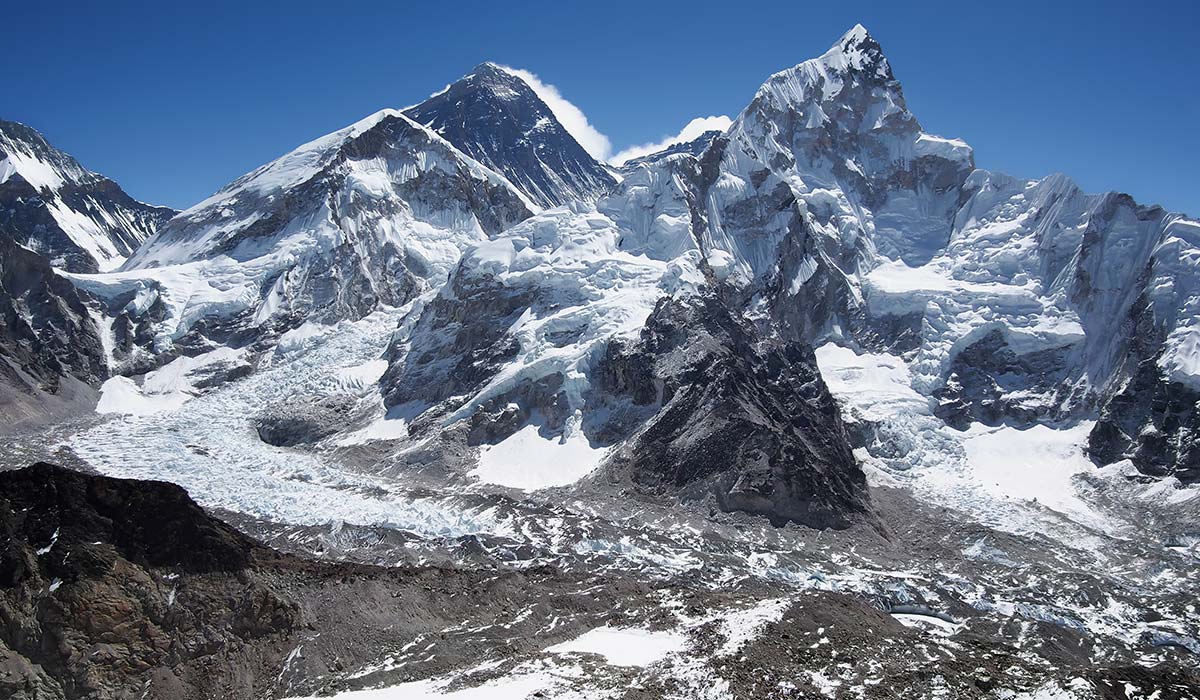
Physical Fitness and Training
This fascinating mainstream trekking route in the Himalayas has been graded as a moderately difficult journey. So, that means although during your Everest Base Camp Trek in November, you will not have to go through any challenging section in the route, you will still need to prepare enough for the trek. Remember that the overall experience of your magical Himalayan journey will depend on how physically you are capable of overcoming the difficulty of the trail. So, make sure to prepare enough for a memorable and remarkable journey. The normal recommended timeframe for training is about 3 to 6 weeks, but you can adjust it depending on your fitness level.
For the Everest trek preparation part, you should majorly focus on improving your strength and endurance level, these aspects will be tested the most during this Himalayan adventure. Similarly, improving your cardiovascular and stamina prospects will make the journey feel easier and more comfortable; these exercises also help with the acclimatization process. To develop an efficient training program, you can do practice hikes and understand the aspects that you need to work on. Similarly, taking guidance from a professional trainer or a guide will certainly be insightful.
Necessary Permits and Paperwork
You will have to get two major permits for the Everest region. In this remarkable Himalayan journey, you will walk through the protected national park and also cross a restricted area in the region, so two of these permits are mandatory for this trek.
Required Permits
- Khumbu Rural Municipality Permit– US$ 20 per person (for first four weeks)
- Sagarmatha National Park Permit– US$ 30 per person
You will be able to collect the national park permit from the office of the tourism board in Kathmandu or at the counter of the national park in Monjo. However, the restricted area permit is only issued at Lukla and Monjo; you will not be able to get it in Kathmandu.
**Note: Green Society Adventure will take care of all your permit needs, so you won’t have to go through the hassle of applying and collecting the permits**
Packing List
As November is a calm and stable period of the fall season, you can go easy with the packing list. Unlike the off-seasons, such as monsoon and winter, you will not need to bring any extra gear and layers to deal with the challenging weather factors during Everest Base Camp Trek in November. Just bring comfortable base layers, a few insulated layers, and buff outer layers for high altitudes as the temperatures are low at the higher regions. Similarly, as you walk, for the most part, finding a comfortable trekking boot is very important. Then, you should pack all personal care items and medications that wil last throughout the trek. Bringing helpful additional gear, such as a trekking pole, sleeping bag (mandatory), headlamp, filtration bottle, power bank, etc, will make the journey more convenient.
**Note: If you are trekking during the latter part of the month, the higher regions will receive light snowfall, so you will need to pack appropriately for the occasion**
Accommodation and Food
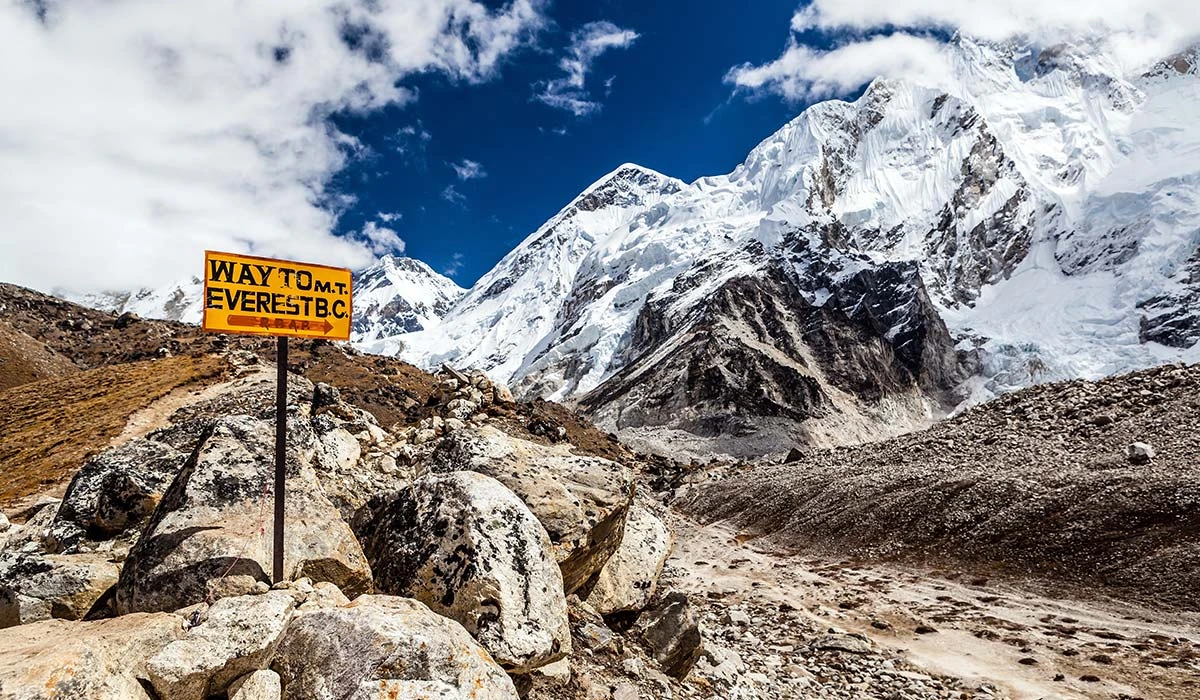
Types of Accommodation Available
There are generally two accommodation options available during your November trek. During your time in Kathmandu, you will be staying at the star hotel at the core part of the city with all the modern facilities and amenities. However, as for the mountain adventure part, there are two options available: teahouses and lodges. The teahouses are the standard accommodation facility on the trail, and the standard package will include your stay at such establishments. As for the lodging, it is a more luxurious experience that provides more amenities and services compared to the teahouses.
Typical Meals and Dining Options
Unlike the remote part of the Himalayan region, the Everest region is a mainstream and world-renowned trekking destination. So, you can expect a good level of meal options during your Everest Base Camp Trek in November. The teahouses serve a wide range of traditional delicacies that represent the unique diversity of the country. Besides those menus, you will also be able to enjoy several international menus. At the popular towns like Lukla and Namche, there are several cafes, restaurants and even pubs, so the available options will not be that different from what you are used to.
**Note: In case you are wondering about the vegan and vegetarian options, they are available at the teahouses throughout the route**
Availability of Amenities
As this trip takes place in a mainstream trekking destination, you can expect a good level of amenities and facilities during the trek. Although the available services everywhere on the trail are not on par with an exotic vacation destination, considering the geographical location and remoteness, they are exceptional compared to other parts of the region. You will be able to take hot showers, charge your devices, hire laundry services, and use the internet and other telecommunication facilities during your trek. So, despite the EBC Trek being a remote exploration, you will not miss out on many of the modern facilities during your time on the mountain.
**Note: The cost for use of the available amenities starts at around US$ 2 and costs upto US$ 5/ 6, depending on the altitude**
Challenges and Tips
Altitude Sickness and Acclimatization
You might be already aware of this: as you climb to higher altitudes, the risk of altitude sickness also relatively increases. Normally, the trekkers start to show the symptoms of altitude sickness after crossing the altitude of 3,000 meters (9,842 feet) if they don’t acclimatize properly. You will start your trek from Lukla (2,800 meters), and the highest point on this trekking route will be Kalapatthar (5,560 meters). So, the overall altitude gain on this trekking route will be approximately 2,760 meters (9,055 feet), which is quite significant. Thus, following a proper acclimatization method is absolutely necessary for this trek. Here are some symptoms of altitude sickness that you should be aware of:
- Headache
- Dizziness and lightheadedness
- Nausea
- Shortness of breath
- Malaise
- Fatigue
- Insomnia
- Loss of appetite
For your Everest Base Camp Trek in November, Green Society Adventure will follow all the necessary precautionary methods to mitigate the risks of altitude sickness during your trek. The itinerary plan follows a gradual pace and ascend; you will also receive enough rest periods to acclimatize to rising altitudes. So you don’t have to worry about altitude sickness while doing this trek, and you can just focus on maximizing the experience.
Safety Precautions
Everest Base Camp Trek is a remote exploration where the trekkers will have to navigate their way across the remote and high-altitude sections of the region. So, the trekkers need to stick with the safety protocols and follow the guidance of the guide to avoid any kind of safety-related risk during the trek. Similarly, getting travel insurance will help you travel feeling more assured, and it will also cover medical assistance if needed. Similarly, you will also need to be prepared for the steps to follow through during the emergency situations.
That’s why it is much safer to trek with a registered agency, as they will take care of every aspect of your journey. For the guided trekking adventures of the Green Society Adventure, we provide a capable crew to the trekkers. The crew will take care of the health, safety, and comfort factors of the trekkers and follow through immediately if there are any kind of issues. For the emergency evacuation as well, the guide leading the trekking team will properly coordinate with our main office and rescue operator for a smooth and swift execution of the operation.
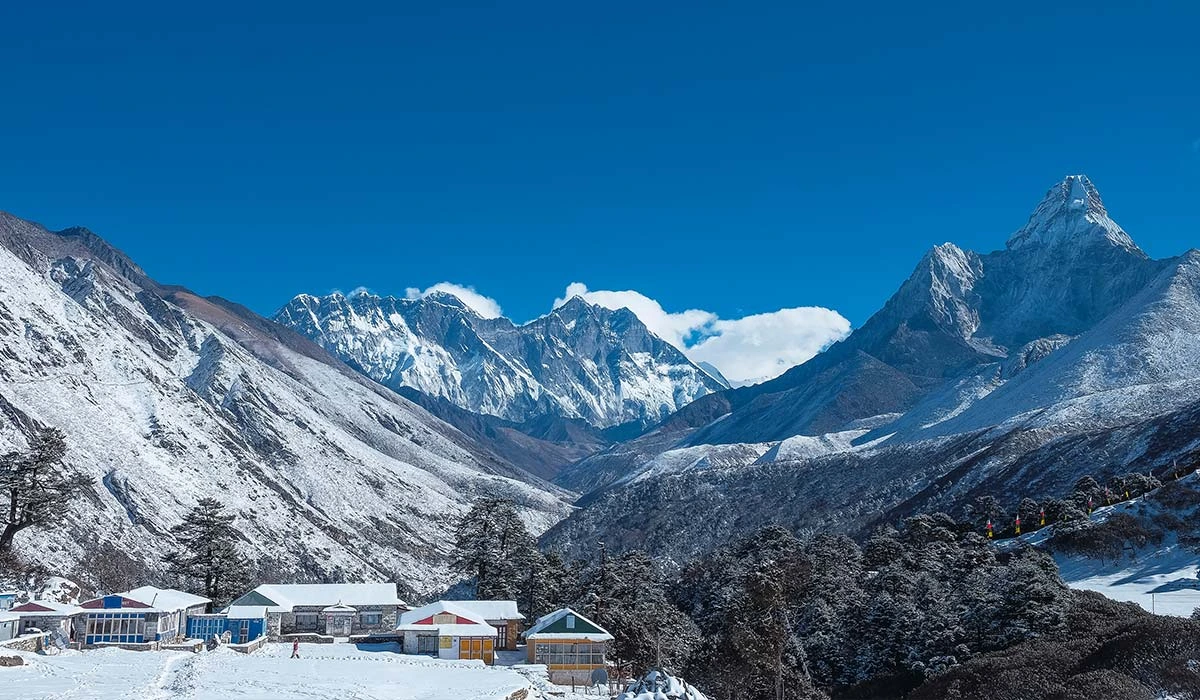
Trekking Tips for a Successful Journey
- Do proper research and plan your trip; select a reputable trekking agency for your adventure
- Don’t skip the physical preparation part; it will determine your experience on the demanding route of the mountain
- Follow a gradual ascend, and don’t climb too fast while heading toward the higher regions
- Always follow the guidance and suggestions of both guide and trekkers; they are very familiar with the region
- Stay on the marked trail, and even if you want to do some wandering, make sure to inform your guide first
- Watch your step carefully at the narrow parts and stay on the mountainside while giving way to the yaks and mules
- Bring a small first-aid kit along with all the general medications
- Keep yourself warm and comfortable, especially in the higher and colder regions
- Eat a healthy and balanced diet, and monitor your nutrition intake, as you will need proper fuel for the physically exhausting journey
- Be respectful of the local culture, norms, and traditions
- Lastly, enjoy your trip, and in case of any inconveniences, consult with your guide immediately

